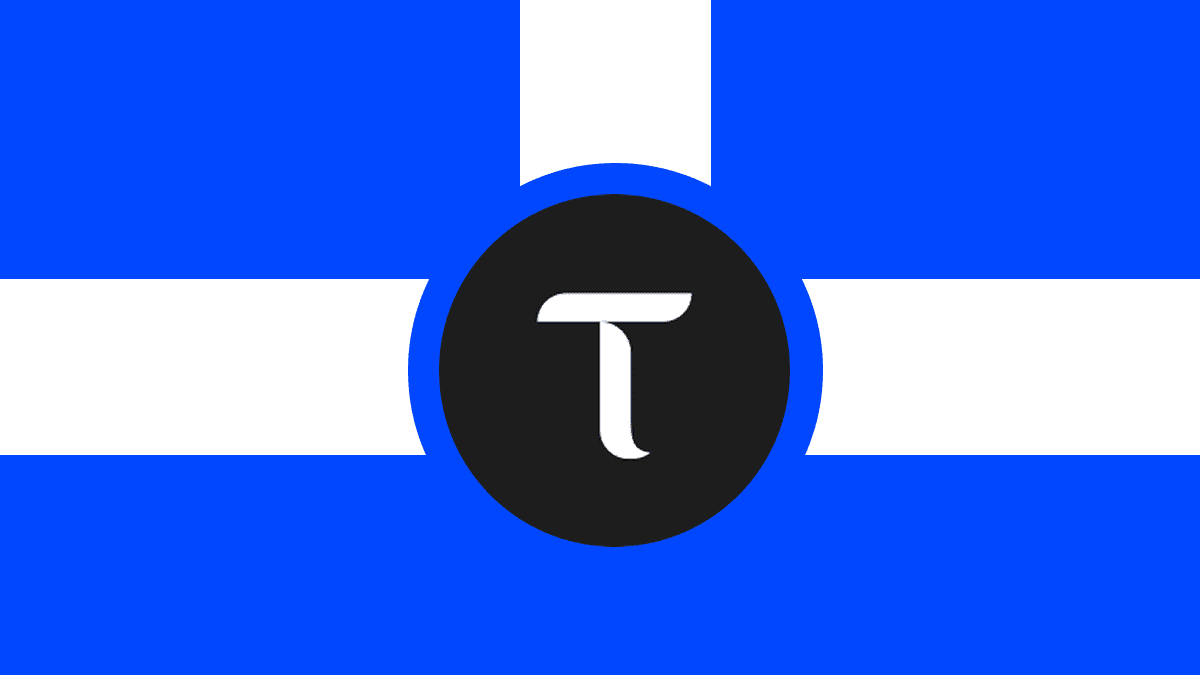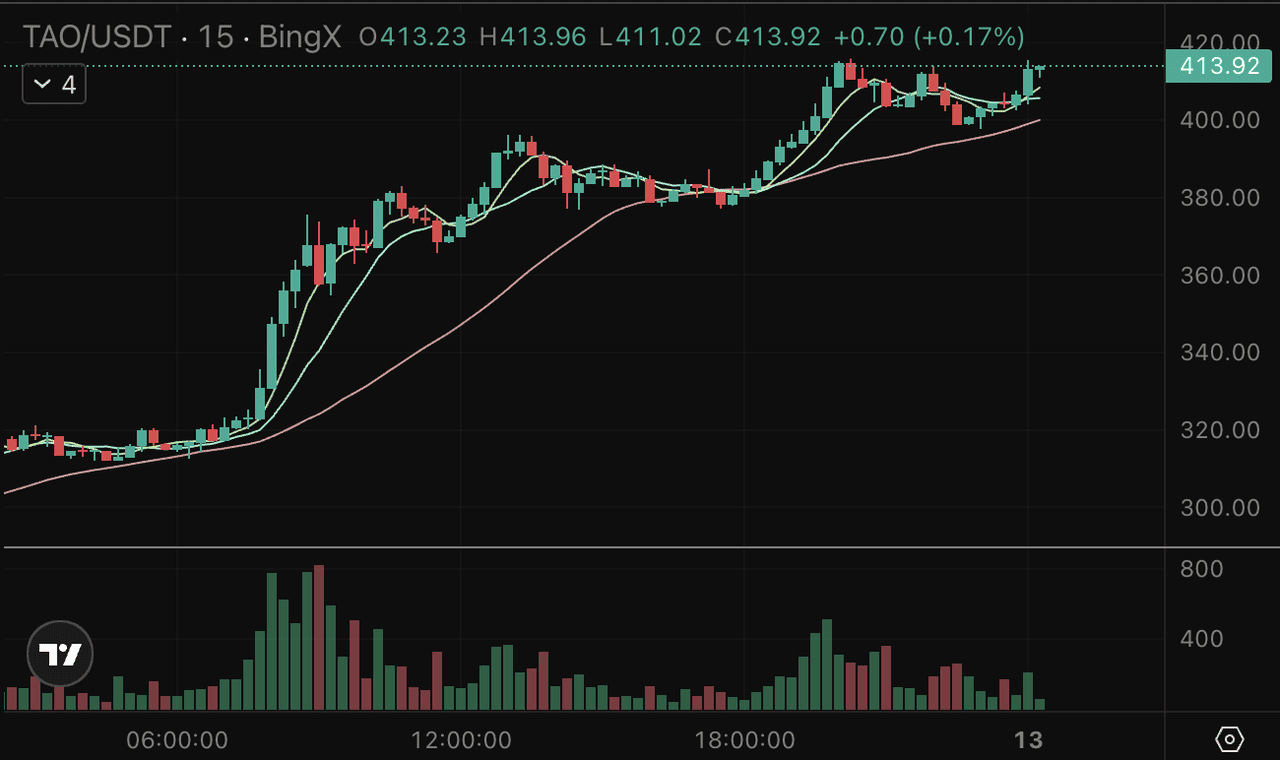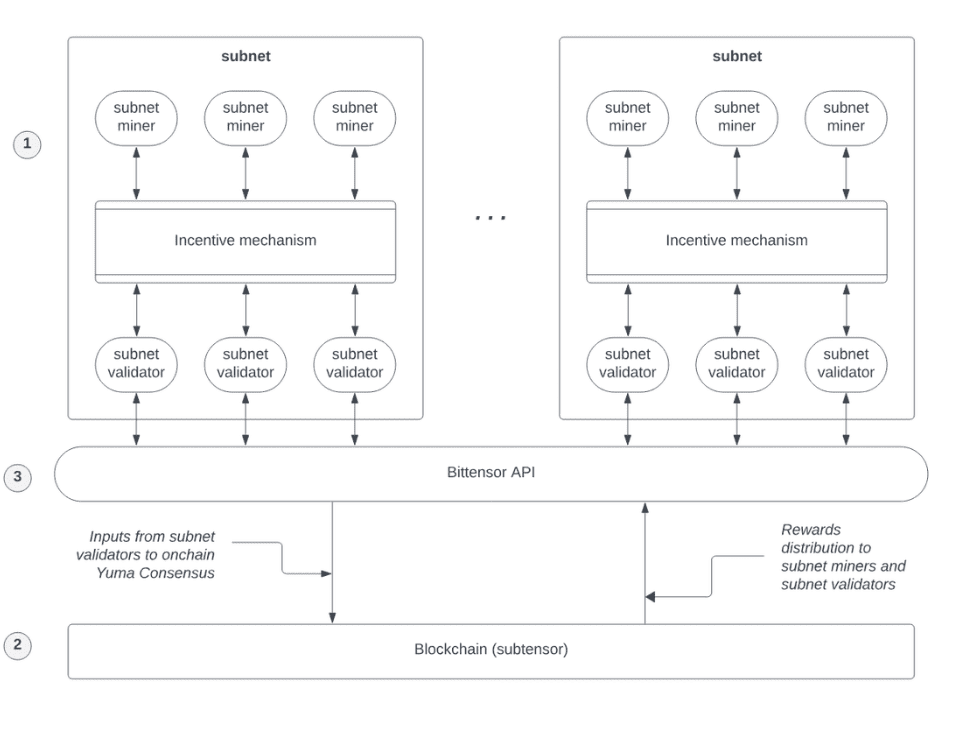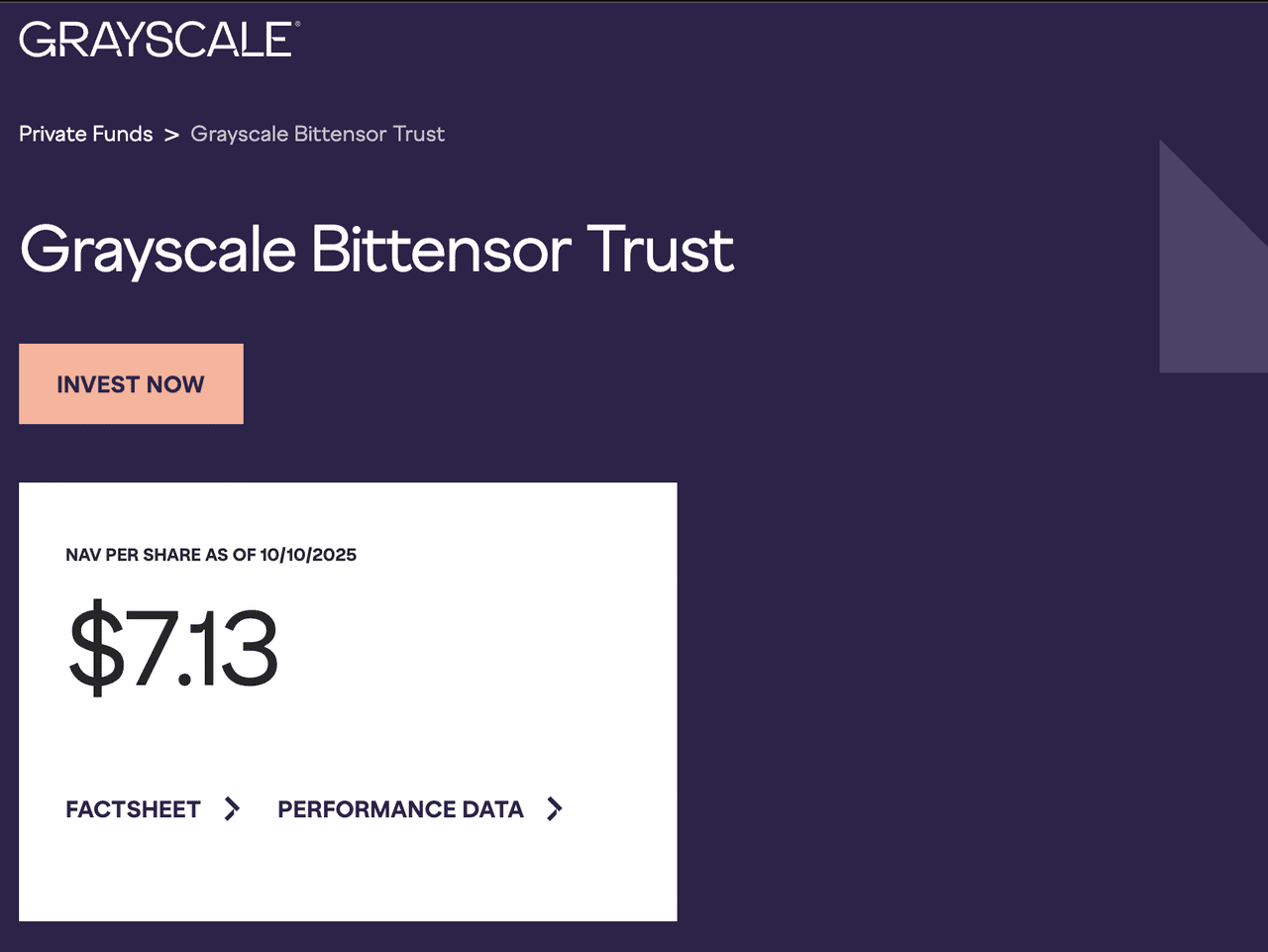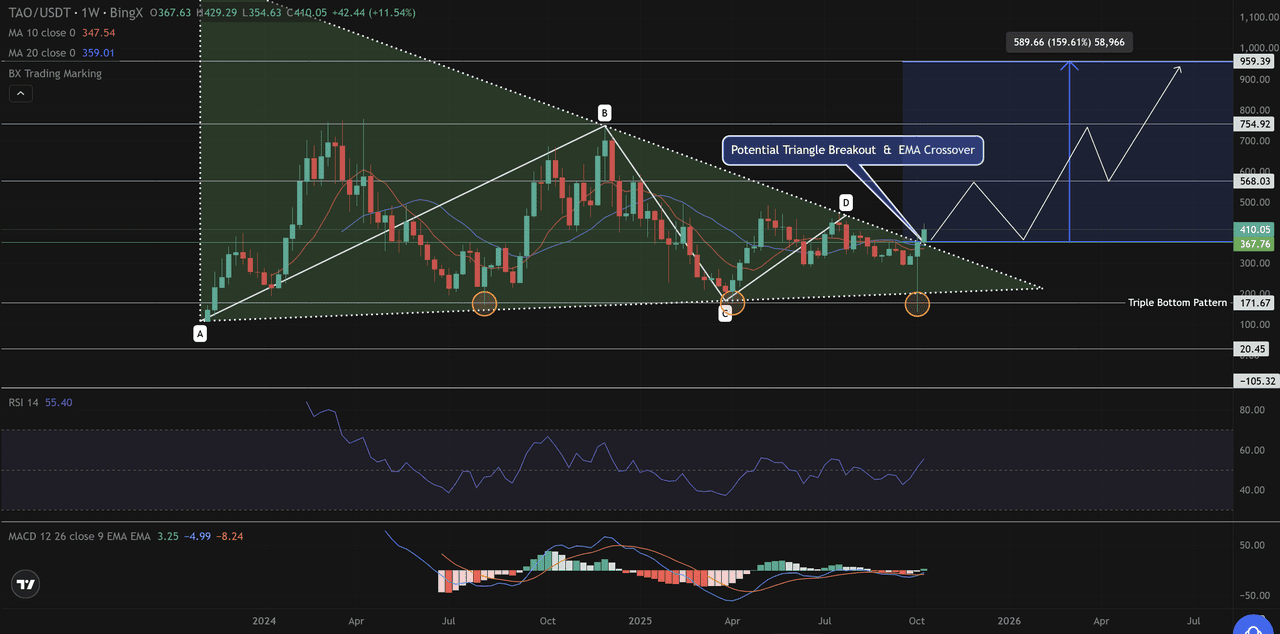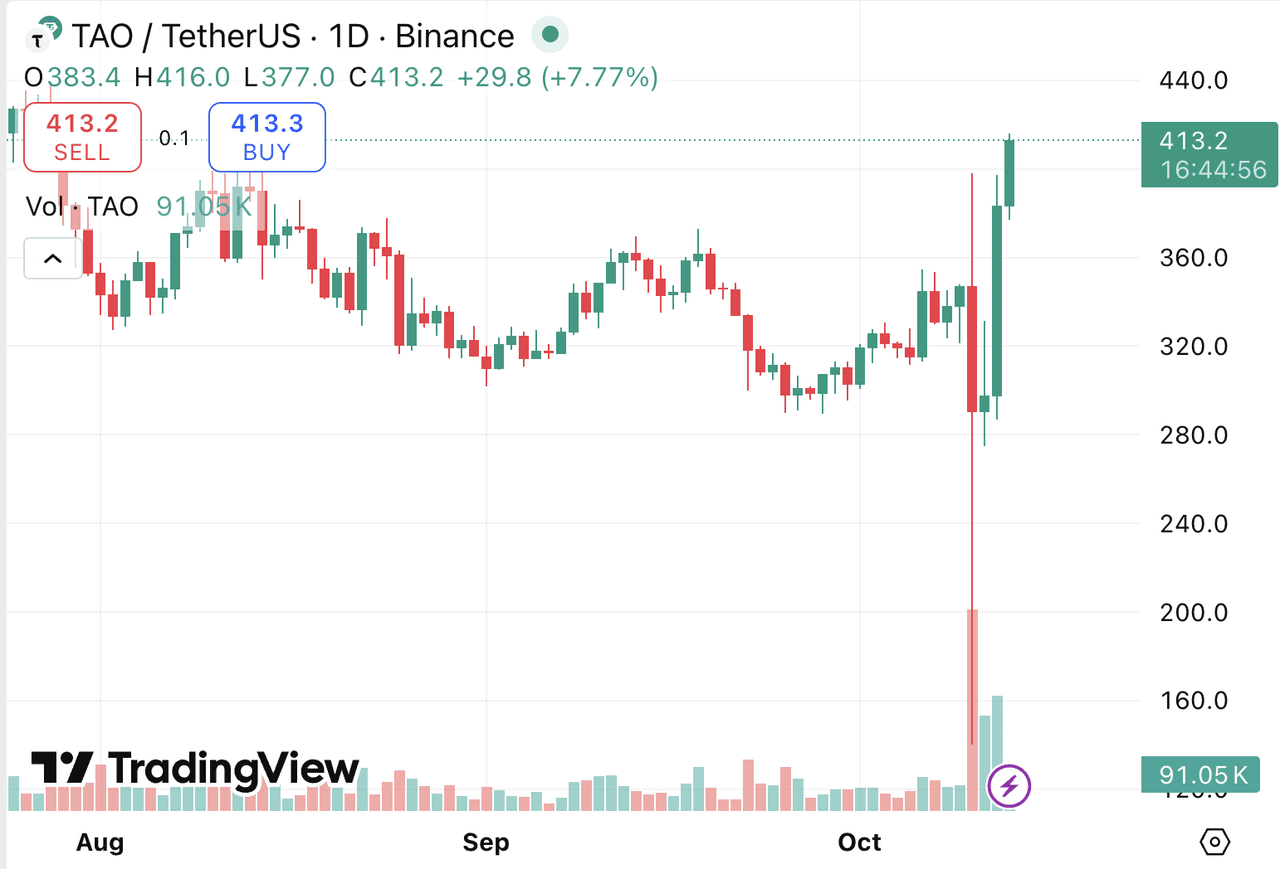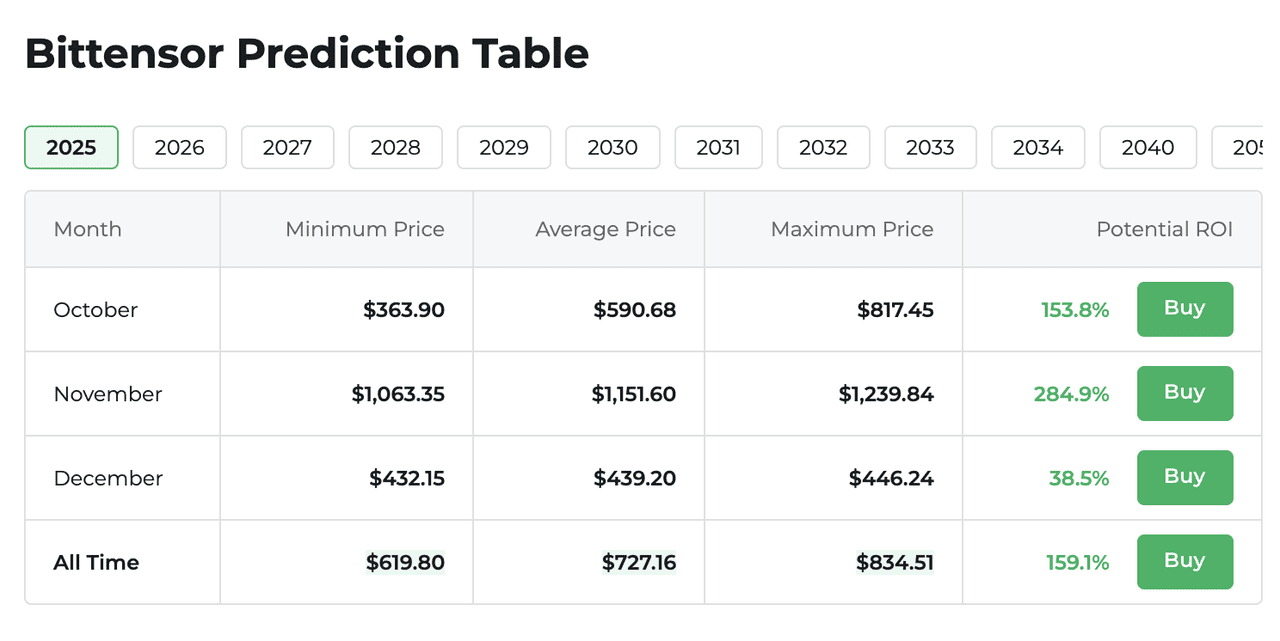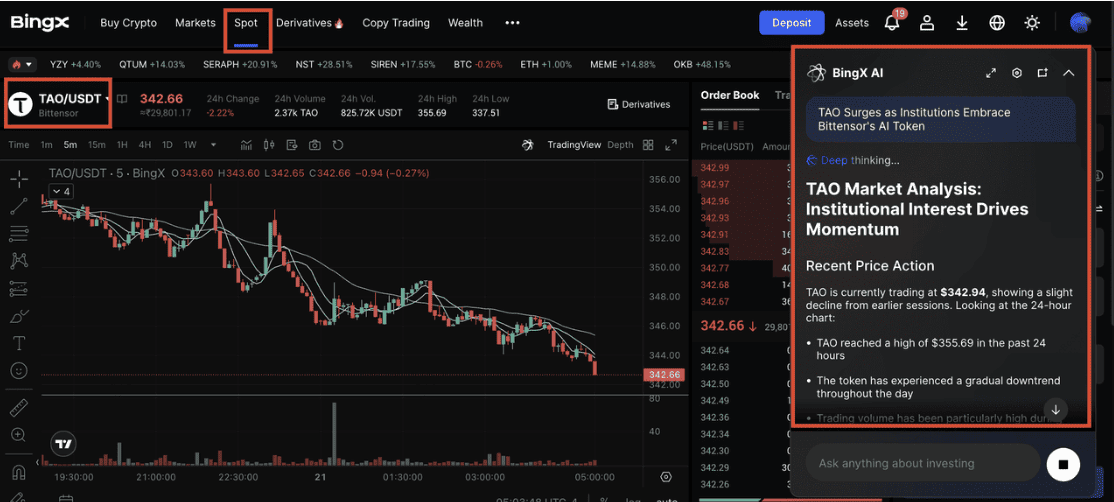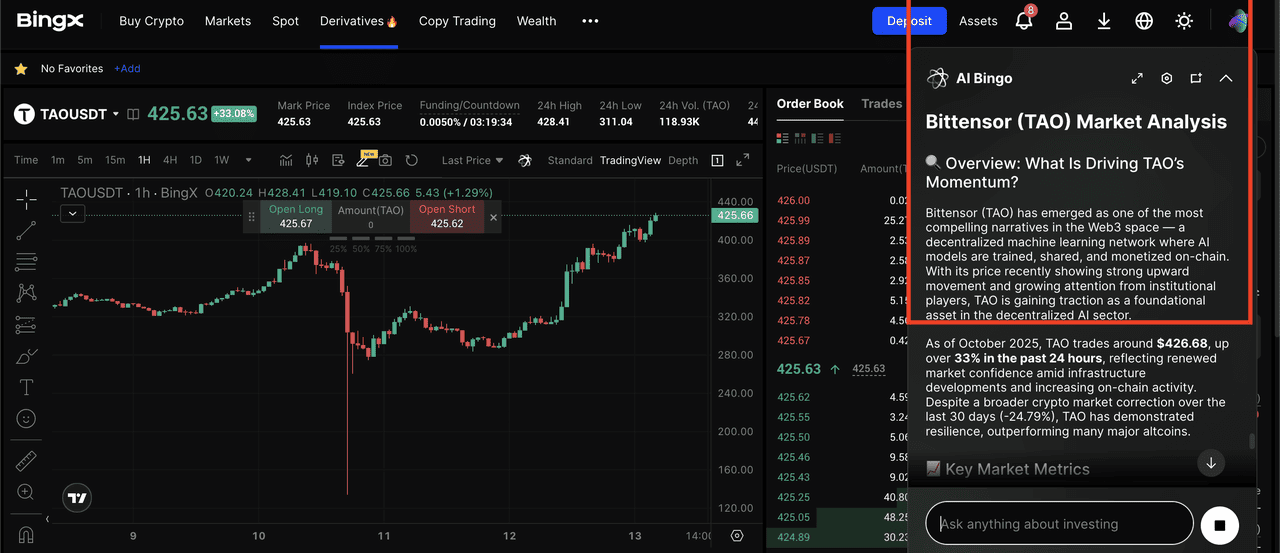Bittensor (TAO) represents a significant advancement in the integration of blockchain technology and artificial intelligence (AI). As a decentralized network, it facilitates the collaborative development and sharing of machine learning (ML) models on a global scale. Bittensor was created in 2021 and has emerged as a leading
AI-focused cryptocurrency attracting substantial institutional interest.
As of October 13, 2025,
TAO is trading at approximately $413 according to CoinMarketCap, reflecting recent market volatility following a high of $397 on October 10 as reported by Yahoo Finance. With staking, governance, and premium AI services all tied to TAO, Bittensor is positioning itself as a cornerstone of decentralized AI, where ownership and value creation are shared across a global community. This article examines the fundamentals of Bittensor, its operational mechanisms, and the factors contributing to its recent performance.
What Is Bittensor (TAO)?
Bittensor (TAO) is a decentralized blockchain network that promotes the collaboration of AI and ML models within a peer-to-peer ecosystem. In contrast to centralized AI development, which is often controlled by large organizations, Bittensor establishes an open platform where ML models can interact and exchange knowledge worldwide. This structure aims to create a collective intelligence, akin to a global neural network that evolves through participant contributions.
Bittensor was founded in 2021 by Jacob Robert Steeves and Ala Shaabana through the Opentensor Foundation to establish a decentralized marketplace for machine intelligence. Steeves was a former machine learning engineer on Google's Brain team who studied math and computer science at Simon Fraser University, began developing the project in 2015, with Shaabana joined as co-founder.
According to industry analyses from CoinLore, Bittensor decentralizes AI by commoditizing machine intelligence, enabling developers to train and trade models in a peer-to-peer marketplace. The network pursues three primary objectives: accelerating AI and ML development through global collaboration, democratizing access to advanced technologies, and establishing an economic framework for intelligence contributions rewarded via TAO tokens.
Key Features of TAO
•
Bittensor connects disparate ML models to enhance overall AI performance through shared insights.
• It employs a Proof of Intelligence consensus mechanism to incentivize valuable contributions.
• The TAO token functions as a utility, staking, and governance asset within the ecosystem.
• With a total supply capped at 21 million tokens, similar to Bitcoin, it incorporates scarcity to support long-term value stability.
• The protocol addresses critical AI challenges, including computational limitations and fragmented innovation.
In 2023, global corporate investment in AI reached $189 billion according to WisdomTree, underscoring the sector's growth, with projects like Bittensor integrating these advancements into blockchain infrastructures.
How Does the Bittensor Protocol Work?
An overview of the Bittensor ecosystem | Source: Bittensor docs
The
Bittensor protocol integrates game theory, neural network principles, and incentive structures to support a decentralized ML environment. Its components ensure efficient collaboration and continuous improvement. Here are some of
Bittensor protocol's key features:
Proof of Intelligence (PoI) Consensus Mechanism
Bittensor utilizes Proof of Intelligence (PoI), also referred to as Yuma Consensus, which rewards participants based on the quality and utility of their ML contributions rather than computational expenditure or stake size. This mechanism applies the Shapley value framework from game theory to equitably distribute rewards, prioritizing accurate and impactful outputs according to CoinLore.
Network Architecture
The network comprises nodes, known as miners, that host ML models and execute predictions. These nodes communicate via Bittensor's client software, enabling coordinated interactions across the decentralized system.
Registration and Subnet Assignment
Participants register using a unique hotkey, either by solving a Proof of Work challenge or paying a TAO fee. Upon registration, nodes are allocated to specialized subnets based on domain expertise, such as natural language processing or data analytics to optimize contributions.
Validators and Evaluation Processes
Validators maintain network integrity by querying miners, assessing prediction accuracy, and verifying output quality. This evaluation process upholds standards and ensures reliable data exchange.
Mining and Service Delivery
Miners provide ML services by processing client requests routed to appropriate subnets. The resulting predictions are transmitted peer-to-peer, promoting scalability and specialization.
Incentives and TAO Token Distribution
TAO tokens incentivize miners and validators for resource contributions and high-quality services, fostering sustained participation. A wrapped TAO (wTAO) variant enables interoperability with the Ethereum blockchain. Drawing from biological neural networks, Bittensor's design allows nodes to perform local computations while exchanging insights to reducing redundancy and accelerate innovation.
Challenges Addressed by Bittensor
Bittensor mitigates key AI development hurdles such as high computational demands that exclude smaller entities and inefficiencies from isolated model training. By pooling resources and enabling knowledge sharing, it lowers barriers to entry and promotes efficient algorithmic progress according to CoinLore.
What Is TAO Token Utility and Tokenomics?
Imagine TAO as the "fuel" that powers the Bittensor network, a place where AI models team up like a big online brain. TAO lets you pay for using smart AI tools (like getting answers from a chatbot), helps keep the network safe by letting people stake their tokens and gives token holders a say in governance. There's only ever going to be 21 million TAO tokens made, just like Bitcoin, and they're released slowly over time through rewards for helping out with the network. This keeps things steady and valuable without flooding the market with TAO. Plus, the system works like a friendly competition: the best-performing groups (called subnets) get more TAO rewards, which encourages everyone to keep improving and making the whole network smarter.
Bittensor's TAO tokenomics emphasize sustainability and incentives, with a 21 million token cap to mimic Bitcoin's scarcity and curb inflation. The market cap of TAO is approximately 3.8B as of October 2025. There's no pre-mine or ICO since all TAO is earned via network participation, like mining AI contributions under Proof of Intelligence. Daily emissions total 7,200 TAO (1 per block, halved annually), split between miners and validators and allocated competitively to top subnets. This rewards quality, while staking and delegation (with 82% of validator yields passed to stakers) boost security and liquidity. TAO also powers AI access, staking yields, and governance votes.
Why Did TAO Surge Over 33% in Mid-October 2025?
TAO has experienced notable price appreciation, reaching $425 on October 13, 2025, according to CoinMarketCap. This momentum stems from institutional advancements, protocol enhancements, and technical indicators. Technical analysis indicates a breakout from a prolonged downtrend, with TAO surpassing key resistance levels. Let's take a deeper dive into the recent surge:
Grayscale's Involvement with TAO
On October 13, 2025, Grayscale filed Form 10 with the U.S. Securities and Exchange Commission for its Bittensor Trust according to
CryptoNinjas, marking a step toward enhanced regulatory compliance and potential public trading. According to Grayscale, this filing shortens private placement holding periods and facilitates access for accredited investors. Additionally, Grayscale's AI fund incorporated TAO exposure, amplifying institutional adoption.
Grayscale's chairman Barry Silbert further supported Bittensor through Digital Currency Group (DCG). DCG provided a $10 million anchor investment to launch Yuma Asset Management on October 9, 2025, a division focused on Bittensor subnet tokens and decentralized AI assets. According to Silbert, this initiative provides institutional pathways to the open-source AI economy while comparing subnet tokens to Bitcoin's hashpower monetization.
Potential Bittensor ETF Developments
While no TAO-specific exchange-traded fund (ETF) has been approved, Grayscale's filing parallels precedents for Bitcoin and Ethereum ETFs, potentially enabling spot trading and staking features according to BeInCrypto. Sector-wide ETF enhancements, including those from Grayscale and 21Shares, boost the environment for AI-related cryptocurrencies.
Protocol Upgrades and Ecosystem Events
Recent subnet expansions and Yuma's integration have improved scalability for AI applications. Bittensor's participation in the HackQuest China Tour, starting on October 12th in Shanghai, features co-founder Ala Shaabana discussing Web3 and AI intersections, alongside projects like Chainbase and KITE AI according to HackQuest on X.
What Is TAO Price Prediction and Key Levels to Watch?
TAO is showing renewed strength after weeks of compression within a symmetrical triangle pattern. The token recently broke above the upper trendline near $360, confirming a potential
EMA crossover on the weekly chart, often a precursor to sustained rallies.
With the price now holding around $410, TAO has also formed a triple bottom pattern near $171, signaling a strong base of long-term support.
The
Relative Strength Index (RSI) is near 55 points to strengthening momentum, while the
Moving Average Convergence Divergence (MACD) histogram has flipped positive, supporting the bullish case. If TAO maintains its breakout structure, the next upside objectives lie at $568 and $754, aligning with Fibonacci extension levels and the upper boundary of the long-term pattern.
TAO/USDT Weekly Price Chart - Source:
BingXTAO Price Outlook and Trade Setup
A clean weekly close above $420 would confirm the breakout path projected on the chart, potentially paving the way toward $950, a 160% advance from current levels.
As sentiment improves and on-chain interest rises, TAO’s setup mirrors the early stages of a major trend reversal, hinting at a new accumulation phase and stronger recovery ahead.
As of October 12th, Bittensor's TAO token has shown bullish momentum following a recent 16% surge due to institutional inflows, trading around $413 with analysts forecasting varied trajectories for the remainder of the year and into 2025.
Price predictions for 2025 vary significantly: optimistic outlooks from Changelly project a minimum of $1,063 and a peak up to $1,239 by November, while Flitpay anticipates a high of $1,226 with an average around $490, and CoinDCX eyes $500-$550 by October's end. The price of TAO is driven by AI sector growth and network upgrades.
More conservative estimates, like those from CoinCodex and CoinCheckup, warn of potential dips to $285-$261 by November if bearish pressures continue, contrasting with Cryptopolitan's balanced range of $158-$544 and an average of $453.
Key levels to watch include support at $350-$380, where a hold could confirm the breakout above $394 (recent resistance now flipped to support), targeting upside resistance at $450-$500; a drop below $350 might signal a fakeout toward $300, while sustained volume could propel TAO toward $1,000 in a strong AI narrative-driven rally.
How to Trade Bittensor (TAO) on BingX
TAO/USDT trading pair on the spot market powered by BingX AI insights
Getting started with BingX is simple, even if you're new to crypto. As the leading AI-powered social trading platform, BingX offers multiple ways to trade and grow your portfolio. You can buy AI tokens like TAO directly on the
spot market, speculate on price moves with
futures trading, or mirror top traders' strategies through
copy trading. For hands-free strategies, set up
trading bots to automate entries and exits around the clock, and explore
BingX Earn to stake or lock your tokens for passive rewards.
Here's how you can buy, stake, and secure your AI tokens confidently with BingX.
1. Sign Up & Complete KYC: First, head to bingx.com or install the BingX app and register using your email or phone number. Then upload a clear photo of your government‑issued ID and a selfie under Profile → Verification. Basic verification often clears in under five minutes; upgrading to advanced
KYC lifts your withdrawal limits and unlocks premium features.
2. Secure Your Account: Protect your assets by enabling two‑factor authentication in Security Settings. Link
Google Authenticator or SMS 2FA to every login and withdrawal. Turn on
withdrawal address whitelisting so that funds can only move to pre‑approved wallets. Finally, set an anti‑phishing code in your account to spot official communications, and use a strong, unique password stored in a password manager.
3. Deposit Funds: Once verified, go to Assets → Deposit and choose USDT or your local fiat currency. For crypto deposits, copy the USDT address or scan the QR code; the network usually confirms within minutes. If you prefer fiat, select bank transfer or card payment; expect funds to arrive in 1–2 business days, and check Deposit History to confirm.
4. Select Your AI Token: Navigate to
Spot Trading as shown above, enter the symbol
TAO/USDT in the search bar, and click the pair. You'll instantly see real‑time price charts, order books, and recent trades to help you plan your entry.
BingX AI can help analyze trends and identify opportunities before you place your trade.
5. Place Your Order: Decide whether you want immediate execution with a
market order or to target a specific price with a limit order. For more control, use
OCO (one cancels the other order) to set both a
take‑profit and a stop‑loss in one ticket, or employ a stop‑limit order to trigger at your chosen threshold if the market moves against you. Always verify the price and amount before confirming.
6. Explore Advanced Trading Options:
TAO/USDT perpetual contract on the futures market powered by AI Bingo
• Copy Trading: Follow top-performing traders under
Copy Trading and mirror their TAO trading strategies automatically. Ideal if you're new to trading.
• Trading Bots: Automate your TAO trades with Spot or Futures Grid bots to capture volatility 24/7 without manual monitoring.
Conclusion
Bittensor (TAO) presents a novel model for decentralized AI collaboration, rewarding participants who contribute computing power and intelligence to an open, blockchain-based network. Its design encourages community-driven growth and continuous innovation across AI subnets, with TAO serving as the incentive and governance backbone. While its vision is ambitious, investors and users should remain aware of potential risks, including market volatility, evolving token emission schedules, and the technical complexity of subnet participation. Conduct thorough research and exercise caution before engaging with TAO or related ecosystem projects.
Related Reading
